Category: Blog

After Fire Damage You Need Odor Removal
As a restoration company that has 50 years of experience of removing odors from fire damage, we can tell you that the fire is the easy part. Every fire has a special damage type and leaves behind a different, unique smoke odor.
Time is of the Essence
The faster you start the restoration process, then the less likely you are to have damaged property. The IICRC has a certain timeline for fire damage and smoke odors. Within minutes, acid soot causes plastics to turn yellow, and highly porous materials will discolor permanently. Hours after a fire, grout, and fiberglass will turn yellow, uncoated metals will tarnish, and countertops, appliances, and furniture may fade. Within a day, the paint on the walls will be stained permanently, metal will corrode, wood will require refinishing, vinyl will need to be replaced, and upholstery will stain permanently. Finally, within weeks, the restoration costs rise tremendously. Unfortunately, however, you cannot save all items.
Removal Process
How you clean is as important as how fast you clean. If you clean the wrong way, your home may never be able to get rid of unpleasant odors. The first order of business is to get rid of the source of the odor. Items that are a total loss or that can be cleaned offsite should be removed from the home as soon as possible. How can you tell if something is damaged beyond repair? Here are some things to look for:
- Solid counters will clean without a problem, but if smoke is inside, it will require sealing the under-layer. Sometimes you’ll see the silhouette of where an item sat on the surface and darker residue around it from the smoke. The longer the smoke sits, the more likely the discoloration will be permanent.
- Carpet can be cleaned from very light smoke, but moderate to heavy damage needs replacement.
- Laminate floors have a layer of highly absorbent foam underneath. If smoke managed to get underneath the floor, your only option would be to remove the floor, to remove the foam, and then replace both.
- Real wood floors need to be sanded and refinished to clean smoke damage.
- Insulation is one item that you must always remove if there is any smoke inside.
Once you remove all items, clean everything left behind and use an odor counteractant. This is where professionals like us come in handy! We always guarantee our homeowners that they won’t be able to detect any form of smoke odor following the work we do in their homes.
Call the Professionals
A trained professional can eliminate smoke odors from fire damage more quickly and thoroughly. At Insight Restoration, our technicians use special neutralizing products, HEPA vacuums, hot thermal fog, ozone machines, hydroxyl generators, and odor counteractants. These methods and tools are not readily available to the general public. Within 24 hours, these products can permanently remove odors.
General cleaning is not enough to remove odors from fire damage. In fact, it may make the situation worse. Call 208-427-2825 and let us get to work on restoring your property and home. The longer you want to call, the costlier the damage. At Insight Restoration, we are always available to respond to emergency situations.
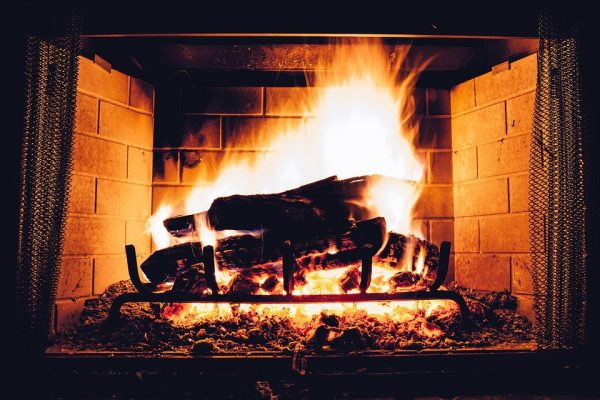
Winter Activities that Put Your Home at Risk of Fire Damage
Winter is the prime season for house fires. According to the National Fire Protection Association, nearly a third of all total-loss house fires occur in the months of December, January, and February. While most fires are small, fire damage can still be costly and potentially injure someone in your home. The good news is that most house fires are easily preventable. Here are some winter activities that can put your home at risk of fire damage and what you can do to avoid a dangerous situation.
-
Space Heaters
Most space heater accidents happen while everyone is sleeping. These toasty devices may be a godsend for some bone-chilling rooms, but they are also the leading cause of house fires in the winter. Here are three rules to always follow when using space heaters:
- Make sure your heater is at least three feet away from anything flammable
- Plug your heater directly into the outlet rather than an extension cord
- Do not go to bed with the space heater on.
-
Cooking
Stovetop cooking is the leading cause of house fires year round, and most occur within the first 15 minutes of cooking. Never leave the room when you have a hot pan on the stove eye. If oven mitts, dish towels, or other flammable items are around, move them at least three feet away. If you’re suddenly faced with flames and spattering grease, the worst possible thing to do is panic. Turn off the stove, put on a pair of elbow-length cooking gloves, cover the pan with a lid, and let the oil cool down. Also, have a fire extinguisher handy.
-
Electrical Cords
We live in a world full of electronics. Because of that, we add an extension cord or adapter to accommodate all of our appliances. Feel the cords to make sure they’re not too warm or overloaded. Also, never run extension cords under rugs, tape them to floors, staple or nail them to walls, or string several together to make an extra-large extension cord.
-
Fireplaces
Fireplaces and chimneys should be checked on a regular basis. However, always make sure to extinguish the fire completely before leaving or sleeping, and keep flammable objects at least five feet away.
-
Candles
The main problem is not the candles, but how we use them. Too many people light them on top of tablecloths or near curtains, which can easily catch fire. Never leave a candle burning unattended, or switch to battery-powered ones.
Precautionary Measures
-
Install and maintain smoke detectors
Each room inside your home needs a working smoke detector, including the basement. Test them every few months and completely replace them every ten years.
-
Have a fire extinguisher and know how to use it
Having a fire extinguisher will do you and your family no good if you do not know how to use it properly. Watch videos online and know how to properly handle one and where to spray in case of emergency. Local firehouses and firefighters will also show you how to use one.
-
Plan an escape route
Know every way to escape from your home in case of a fire. The front door is not always an option. Know how to break away from bedrooms and windows.
At Insight Restoration, our number one goal is to keep you and your family safe from fire damage. If damage does occur on your property, the key to proper clean-up is to act fast. Call us at 208-427-3042 and we’ll send our experts out immediately to inspect the damage.
Is Your Property in Danger of Ice Dams?
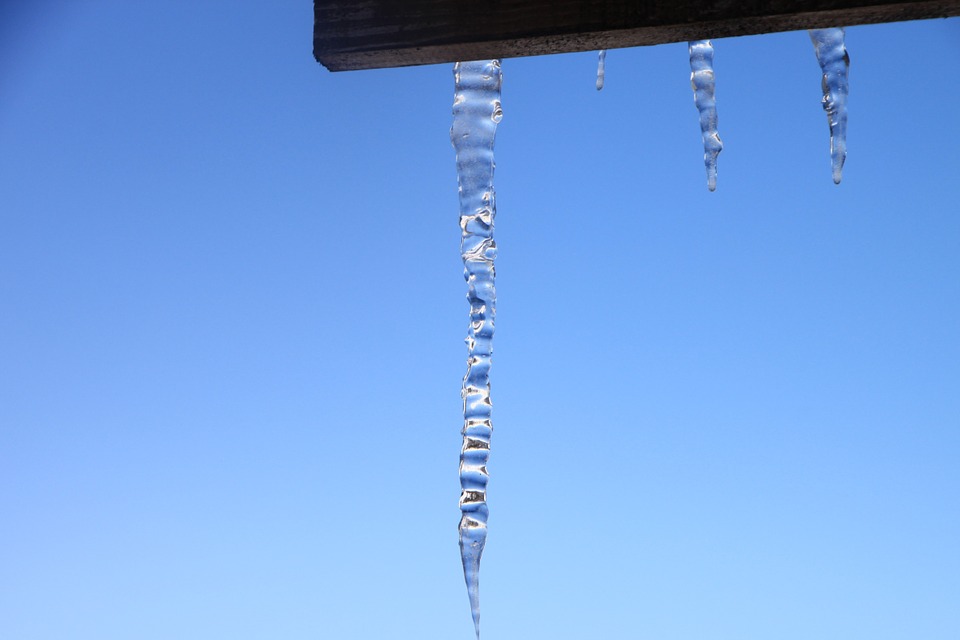
Here in Idaho, we have harsh winters with a lot of snow and varying temperatures. This is the perfect recipe for snow to accumulate on your roof and for ice dams. In valley areas, ice dams can melt and easily slide away because temperatures do not rise sharply. With no warning, the ice melts and causes roof damage and leaking. In higher elevations, ice dams are a major issue due to the large amount of snow that begins accumulating on the roof early in the winter season. The more snow and ice, the worse the ice dams can get.
Just because your roof is new doesn’t mean you cannot have an ice dam. Most ice dams develop on the edge of your roof. Be sure to monitor the weather and your roof for signs of ice dam formations. Here are some signs that your property may be in danger:
- If the icicles are confined to the gutters and there is no water trapped behind them, then an ice dam has not yet formed. Icicles are however a precursor to ice dams. Depending on their location and size, icicles may also pose a danger if they fall off.
- If you notice water stains on the ceiling of exterior walls, that may be an indication that an ice dam has formed an water has penetrated the roof membrane.
What are Ice Dams?
An ice dam is a wall of ice that forms at the edge of the roof, usually at the gutters. When it forms, the water backs behind the ice dam and creates a pool. This pool of water can leak into your home and cause damage to walls, ceilings, insulation and other areas.
What Causes Ice Dams?
Ice dams are usually caused by a heavy snowfall and improper ventilation in the attic. This causes warmer areas in your attic. Even when the outside temperature is well below freezing, snow will begin to melt around these areas. When snow on your roof starts melting, water runs down your roof underneath the snow until it reaches a “colder” section like the soffits or gutters, then it begins to freeze again. This process of thawing and refreezing is what causes an ice dam.
Preventing Ice Dams
Properly ventilating and insulating the attic is the best way to prevent ice dams. Here are a few simple steps that can also help prevent ice dams and condensation in your attic:
- Prevent warm, moist downstairs air from coming into the attic
- Seal all openings that may allow vapor to rise into the attic.
- Keep the attic air temperature below freezing when the outside temperature is in the low 20’s.
- Provide good ventilation to replace warm attic air with cold outside air.
- Use a roof rake to regularly remove the snow from your roof.
- Keep the gutters clean of leaves.
If your property is in danger of ice dams, call the experts at Insight Restoration at 208-427-3042. We have the proper equipment and experience needed to evaluate the situation and offer a lasting solution for your home.
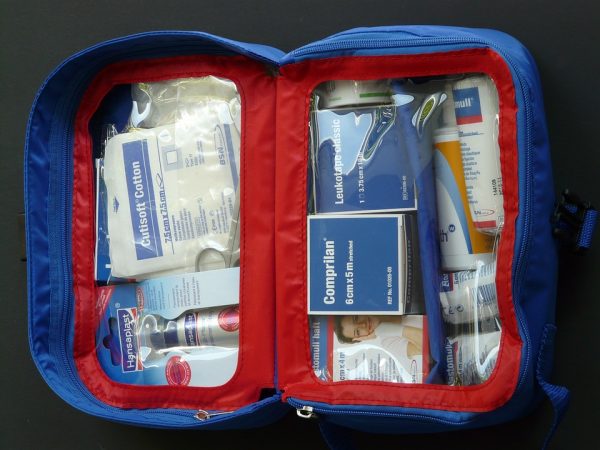
How to Prepare an Emergency Kit for a Disaster
A disaster such as a fire, flood, earthquake, or even a man-made disaster can strike at any time. It’s never too early to talk to your friends, families, and neighbors about emergency plans. Those plans should also include an emergency kit, no matter where in the world you live.
The geographical issues your family may face are among the most important factors to consider when packing an emergency bag. In North Idaho’s Booner, Boundary and Kootenai Counties face mudslides and flooding as their number one disasters. They have guidance and materials for virtually every emergency scenario: biological and chemical attacks, cyber-incidents, droughts, landslides, home fires, snowstorms and even space weather.
Basics
- Water – Have at least three days’ worth of water for every person in your family. Also, invest in a portable filtration system in the event you have to suddenly move.
- Food – Three days’ worth of nonperishable food for every person in your family is recommended. Nonperishable food can be energy bars, crackers, peanut butter, canned fruit, meat, or vegetables.
- First-Aid Kit
- Portable Lighting – Flashlights and tea candles are ideal for emergency lighting around a home. If you can purchase a headlamp, these can last for up to 200 hours on three AAA batteries and frees up both of your hands.
- Emergency Devices – A battery-operated radio and emergency whistle are perfect to have on hand if your cell phone cannot get service.
- A Face Mask – Airborne debris, fumes, or gas from accidents or natural disasters can cause respiratory problems.
- Solar Chargers – Flooding may cause you to have restricted access to electrical outlets or reliable power. Solar chargers will charge devices as large as a tablet with a day’s worth of sun.
- Miscellaneous Items – Always pack up to three days’ worth of personal medications, especially life-saving ones. Include any equipment or supplies needed to help you survive the next 72-hours. Make sure you also pack a spare pair of glasses, sanitary towelettes, paper maps of your area, tweezers, scissors, duct tape, wind-resistant matches, and cash, traveler’s checks, or change.
Extras for an Emergency Kit
- A Multi-Tool – These tools can do everything and can even help with performing first-aid, building fires, and repairing electronics.
- Mylar Blankets – These blankets are windproof, waterproof, and capable of reflecting more than 90% of body heat.
- Bleach – This is a perfect disinfectant and can even be used to treat water when diluted.
- Specific Needs – Take into account your families’ specific needs. Infant formula and diapers shouldn’t be overlooked and can be difficult to find on the go, especially in an emergency. If you have children, be sure you pack something to occupy them.
Property damage can happen unexpectedly. It is important to restore your property as quickly as possible to prevent further damage in the future. It’s even more important to prepare for an emergency in the event of a disaster.
At Insight Restoration, we have over 50 years of collective experience restoring properties to their pre-loss condition. Equipped with a highly-trained team of certified technicians, we are available to take your call 24 hours a day, seven days a week. Your safety is our number one priority. Call us today at 208-427-2962.

Five Questions You Should Ask about Mold Removal
Are you concerned with mold in your home? If you’ve seen the telltale patches of green or black spores growing in your basement, bathroom, or kitchen, then you might have a mold problem. If you are concerned that you have mold, it is imperative that you not ignore the problem. Your mold is not going to go away on its own. It will only get worse. The mold will continue to grow and expand. If you do not get rid of the mold, you will subject yourself and your family to unhealthy air quality. In the end, the cost of removing the mold will be more expensive and your health could be compromised.
Quotes
The first question that must be answered is the overall cost of the mold removal. Even though you don’t have a lot of time, you should get more than one quote for the mold removal. It is important to know that the company you select is not trying to take advantage of you. However, the cheapest bid is not always the best bid. You need to not only consider the cost but consider which company will provide the best service.
Moisture
When getting these quotes, you must find out what the individual companies believe is behind the mold. If the company has no idea why the mold is occurring or has no plans to get rid of the reason behind the mold, then this is not the company for you. If there is mold, there is moisture. You must resolve where the water is coming from to prevent a future recurrence.
Certified and Insured
The next question that must be answered is whether the company is certified and insured. Anyone can claim to be an expert. However, not everyone can adequately remove your mold problem. Regarding insurance, the company needs to have more than general liability insurance. You want a company with professional liability or errors and omissions insurance. Don’t take their word for it on their certification or insurance. Ask to see a copy of both. What should you look for when they provide you with proof? You should look to see what certification they carry, and which organization provided it. The same goes with insurance. You should make sure that the insurance is provided by a reputable company.
Expert
If your mold removal expert is refusing to work with anyone else, he or she is not a good fit for you. You should not be lured into the one-stop shop philosophy. A better result can be found when the mold removal expert is willing to get assistance from experts from other fields if the need arises. For example, if your potential mold removal expert believes that your mold situation is the result of a structural issue, he should not be jacking up your house to fix it. The mold expert needs to contact a foundation expert.
Inspections
The last question that needs to be answered is regarding inspections. Your mold removal expert needs to agree that post removal testing will be done by another party. Yes, it would be cheaper to stick with the same company. However, when you get another company to review their work, you will get better results. In addition, your mold removal expert needs to agree to certain testing parameters before doing the job. Then, when the work is completed, those parameters must be met before payment will be completed. This agreement protects you from shoddy work. Once the work is done, then the post-removal team will determine if the removal experts reached the goals that were previously set. Only after those goals have been reached should payment be made.
Contact Insight Restoration Now
If you have mold, it is important to not ignore the problem. Select the right company to protect your property and family. You must do your homework.
Insight Restoration is an expert in the field of mold removal. Insight Restoration is an experienced industry leader. To get started with mold removal, call 208-427-2962.
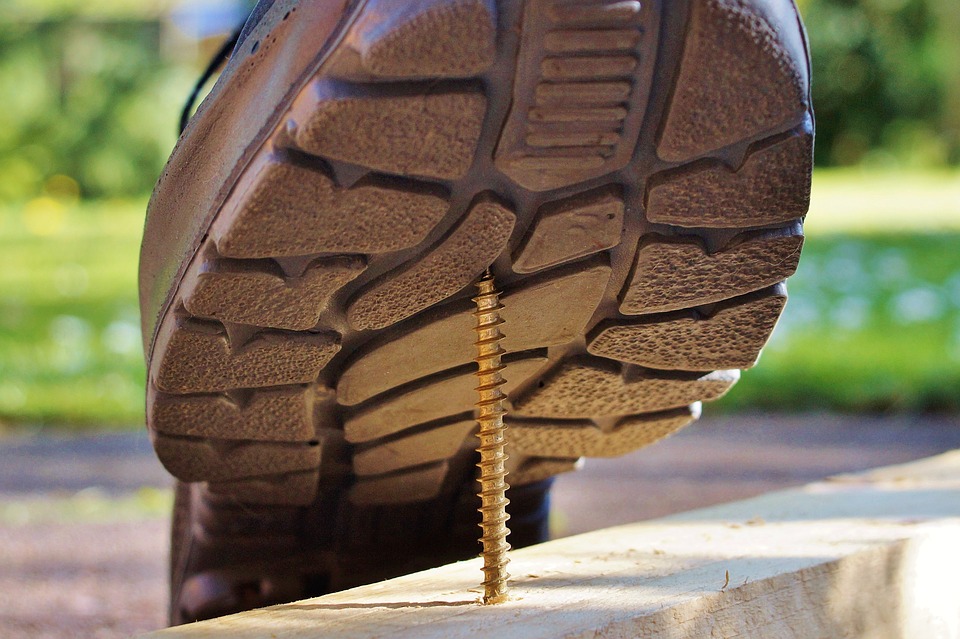
Tips for Preventing Injury when Completing Storm Damage Cleanup
Any type of storm damage cleanup can result in a hazardous situation. In many cases, hazards are not always obvious to the untrained eye and attempting cleanup can result in injuries. Damage can be anywhere, from a total loss of a property to damage to just one room, a roof or patio, or windows. Trees and branches may even need to be removed to prevent further damage and injury. Calling the experts at Insight Restoration is the first step homeowners should consider. However, we know immediate action may need to be taken just to locate a phone! In serious situations, here are some tips to help prevent injury when trying to complete storm damage cleanup:
Get the Right Safety Gear
- Hard hats
- Goggles
- Face masks or respirators
- Work gloves
- Waterproof or steel toe boots
- Fire extinguishers
Potential Hazards Where Injuries Can Occur:
- Contaminated water hazards – Sewage can easily spill into the water during severe storms. Not only sewage, but dangerous spills including bleaches, chemicals, or gasoline can also contaminate waters.
- Airborne inhalation hazards
- Drowning – Flooding water poses drowning risks for everyone, regardless of their ability to swim.
- Animal and insect bites – Severe storms can displace animals, insects, and reptiles. To protect yourself and your family, be alert and avoid contact.
- Wounds – Deep waters or even debris on the ground may contain sharp objects, such as glass or metal fragments that can cause injury and lead to infection.
- Electrical Hazards – Fallen power lines are common during storms. Never drive through standing water if downed power lines are in the water. Avoid contact with overhead power lines during cleanup and other activities.
It’s important to remember to prevent injuries during storm damage cleanup. Always wear protective clothing. Wear sturdy shoes, long sleeves, and gloves whenever you handle, walk around, or are near debris. Many of the injuries caused by storms result from stepping on nails in and around damaged homes and buildings.
Attempting storm damage cleanup on your own is never recommended. If necessary, please ensure you have proper protection and avoid dangerous situations at all costs. As soon as possible, call the professionals at Insight Restoration at 208-427-3042 and we’ll respond immediately.

The Shocking Revelations to Prevent Sewer Backup
As a homeowner or renter, there is little worse than nasty sewer backup. The smell wafts up through your basement door, followed by the nausea-inducing sight of sewer water standing a foot deep on your basement floor. Or, you reach the bottom step only to discover sewer backed up in your floor drain, toilet, and shower. Sewer backup is a health hazard. The bacteria found in these waters is not something that you want to clean up yourself. Of course, the smell and sight would probably be enough to have you reaching for the phone in the first place.
Reasons for Backup
Why does a sewer backup? One of the main reasons for a sewer backup and flood in your home is an issue with your city sewer system. Another potential reason is a blockage in your sewer lines. If your basement floods every time you experience a heavy rain, your city’s sewer system is likely the culprit. On the other hand, there is a chance that it is something on your end. You could have a tree root growing into your sewer line, causing you issues when you attempt to drain water out of your washing machine, dishwasher, or even your toilets. These skills are generally above the skillset of a honey-do list.
Insurance
The unfortunate thing about sewer backup is that a lot of time your insurance doesn’t cover this casualty. However, if they do and you put in for a claim, you still aren’t out of the water. Many insurance agencies will not continue to insure you after you’ve had a claim for a sewer backup. On the other hand, there are some insurance agencies that will still insure you, but they may reduce the amount that you are insured for, refuse to renew your insurance, or increase your deductible. Insurance agencies consider two issues with this type of sewer backup. The first is that it is likely to occur again if it does it once. The second is the biohazard of what is involved in a sewer flood is a liability.
Prevention
What can be done to prevent your home from getting flooded with sewer water? To prevent a sewer water crisis in your home, you should have a professional install a double- or triple-valve system that protects your home from sewer backup. These systems can be installed in your yard and are mostly undetectable. The valves will be placed inside your sewer lines. When water begins to come towards the valves, they automatically close and will keep your basement from flooding.
Maintenance
Another strategy that you can employ while researching why your sewer originally backed up in the first place is to have a professional check your line for damage on a yearly basis. What do the professionals look for? They look for a deterioration of the lines, for cracks, obstructed lines, and collapsed lines.
Contact Insight Restoration Now
In conclusion, if you frequently have sewer backup in your home, you need to have a professional evaluate your set up and provide you with assistance if needed. A basement filled with sewer water is extremely dangerous. Before attempting to clean up, you must turn off the electricity to prevent shock. If you need assistance in determining what is going on with your sewer lines, contact Insight Restoration. Insight Restoration is an experienced industry leader. To get started with preventing sewer water from flooding your basement, call 208-427-2962.

Five Common Myths about Asbestos Removal
Is your home at risk of causing you asbestos exposure? People normally think of houses built in the 60’s or earlier as those homes or buildings that place us at a greater risk. However, homes built as early as the 1990’s have asbestos in some of the building materials. Not to mention, several products in your home currently could be exposing you to asbestos. Examples of these items include older appliances, crockpots, hair dryers, and stove mats.
Reduce Risk
So, what can you do to reduce your risk of developing cancer from asbestos? You should replace any old appliances with newer ones. Moreover, you should have your home professionally tested. If asbestos is found, let the experts get rid of it for you as it can obviously be dangerous to be exposed to asbestos. Let’s explore some myths about asbestos removal.
Construction
The first of the asbestos removal myths is regarding construction. While the asbestos in your home might not be causing a significant risk if undisturbed, the minute you start a construction project for a home remodel, you will stir it up and allow it to be breathed in. What items in your home might put you at risk of exposure? Some of the building materials that contained asbestos include flooring, shingles, tiles, and roofing. During the construction period, your family should vacate your home to prevent exposure.
Smoking
The importance of not smoking around asbestos cannot be touted enough. Whether you are near the asbestos, or the experts are, do not smoke in the area. Smoking is unhealthy on its own. However, smoking when asbestos is around can increase lung cancer risk by 50-90%. Even if you smoke at your own risk, secondhand smoke is just as dangerous to others when around asbestos.
Removal
During the actual removal of discovered asbestos, it can become powdery and breathed in. As a result, any time you would like asbestos tested for or removed, you need to speak with an expert in the removal of asbestos rather than attempting a do-it-yourself project.
Symptoms
Once the removal is complete, you may not be out of danger yet. If you did the project by yourself or an unprepared person did the removal, the dangers may still be lurking in your home. In these cases, it is important to learn the symptoms of asbestos exposure. Some symptoms include a persistent cough, a cough with phlegm, unexplained weight loss, difficulty to breathe, and loss of appetite.
Small Doses
The last of the asbestos removal myths is that small doses are not dangerous. This is not the case. No matter what the size is of the asbestos, the substance is dangerous. Even small doses have been linked with mesothelioma.
Contact Insight Restoration Now
In conclusion, if you fear that your home has asbestos, you need an expert to evaluate the materials in your home. A home with even a small amount of asbestos can be dangerous to its inhabitants. If your home was built before the 1990’s or you’re concerned that a building material contains asbestos, you should call an expert to help you with the removal process.
Insight Restoration is one such expert in this field. We can help you determine if your family is at risk and present a plan for removing any dangerous substances. Insight Restoration is an experienced industry leader. To get started with asbestos removal, call 208-427-2962.
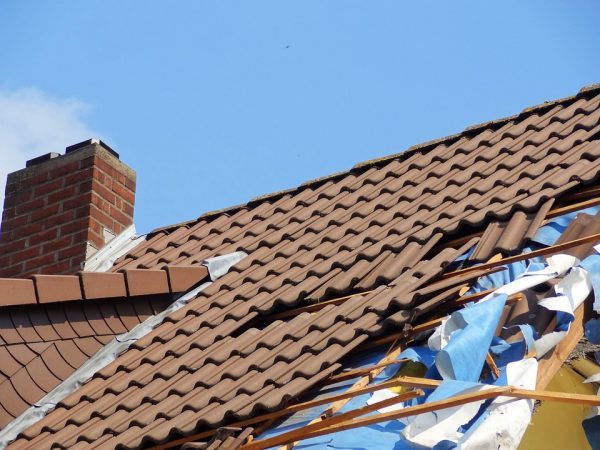
Six Tips for Storm Damage Cleanup
Property damage from relentless weather and storms can be disastrous on homes and business premises. Storm damage cleanup can be a daunting task. The most common mistake regarding storm damage is calling your insurance company first. While calling them within a certain window of time is important, there are also some things you should do before picking up the phone.
First, you should call a high-quality, reputable storm damage restoration company such as Insight Restoration. We will fully inspect your property to find exactly what damage the storm left behind. We often find damage that insurance adjusters overlook. By having a full report and inspection on hand before an adjuster arrives on your property, you avoid missing out on repairs that should have been covered. Below are six tips to help with immediate storm damage cleanup:
Extract Water
With a heavy storm comes heavy rains and possible flooding and water damage. If water comes into your home, it’s essential to remove all water carefully. Let your sump pump do its job, then remove the rest of the water with a wet vac or mop. Clean any drains that are covered in debris and vacuum the water from them as well.
Keep Air Circulating
Once the storm subsides, you need to find a way to keep air circulating in your home. Open vents and windows and set a fan to keep fresh air flowing through rooms. The quicker everything dries, the less potential there is for mold, mildew, and permanent damage. A dehumidifier will also help remove damp air and facilitate the dry-out process.
Check for Leaks
Survey the inside of your home to see if there are any water spots on ceilings or near chimneys. This is a sign of additional roof problems, including compromised shingles or inadequate flashing. Also, check for leaks in appliances and around the foundation of your home.
Fix Broken Glass
High winds and flying debris might have shattered a window or door in your home. If the window is cracked or only partially broken, inspect the pane and surrounding frame to assess whether the window is stable as-is. If the window shattered, try to determine how far the glass scattered to evaluate how big your cleanup area will be. Look for glass shards or particles behind furniture, within cushions, and on top of furniture surfaces — not just on the floor.
Clean with Disinfectant
A storm can bring in a variety of contaminants from sewage to chemicals. Be sure to clean floors, walls, and furniture with disinfectant. Even a solution of warm water and bleach will work.
Tarp and Board Up
When done correctly, covering your roof and boarding up holes in your home caused by storm damage can save you a lot of money. Leaks will be contained, animals will be kept out, and your risk of unnecessary vandalism will decrease. Utilizing board-up or tarp-over services from a trained professional can keep your overall repair costs, as well as stress levels, down.
Taking time to address a broken window or damaged roof immediately can save you thousands of dollars in the long run. For a fast response with professional results, call Insight Restoration today at 208-427-2534 or visit us online at www.insightrestoration247.com.
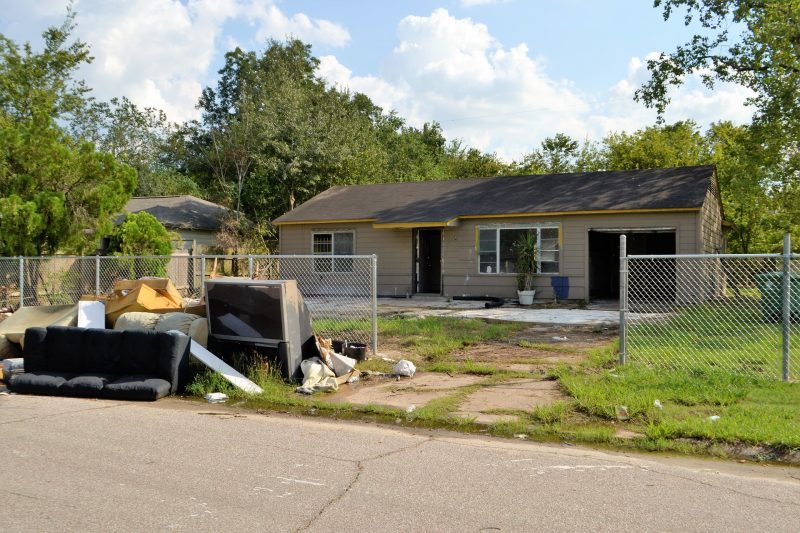
Why You Should Tarp or Board Up Property Damage
When a disaster strikes, it can be devastating for you and your family. Years of hard work and fond memories can be wiped out in an instant as the result of fire, tornado, or hurricane. As a result, it can be hard to look at your home and not want to walk away, saying, “What’s it matter? The damage is already done. Why bother to tarp or board up damage?”
However, walking away is not a good decision for you to make. There are several different reasons why walking away is not the right option to take.
Prevent Further Damage
The first reason to tarp or board up damage is to prevent further damage. Your home may have sustained substantial damage, but if it is not a total loss, tarping and boarding up your home can prevent further damage. When rain or snow piles in through an open area, continued damage will occur. You could also see further damage from animals getting in through any open areas and further tearing up your home. By tarping or boarding up your damage, you can prevent this from occurring.
Continued Insurance Coverage
The next reason to tarp or board up damage is for continued insurance coverage. Some insurance policies will not cover further damage caused after the original event occurs. As a result, you neglecting to protect your home from further damage could result in your policy not being enforced. It is important to do everything you can to prevent further damage from occurring to your home while waiting for repairs to be made.
Prevent Vagrants
When you leave a portion of your home open to the public, you may get more than a few unwanted animals. You may also get some people who decide to squat in your home or rummage through your personal belongings to take what they can make a quick sell through stealing.
Liability
If an uninvited person were to enter your damaged home and somehow get injured, you could still be found responsible for his or her injuries. The last thing you need is to pay for someone getting hurt on your property in addition to dealing with the damage to your home.
Preparation
There are other times when you should consider tarping and boarding up, like when there is an anticipated natural disaster looming around the corner. For example, there is usually ample warning prior to a hurricane hitting landfall. If you know in advance that a hurricane is coming, you should have your home tarped and boarded up. By doing so, you can potentially save your home from receiving damage.
Get Help
It is dangerous to tarp or board up after a home has endured a fire or storm damage. If you are to do it yourself, you must be sure that the potential for harm is a low risk. Otherwise, you must contact an expert.
Contact Insight Restoration Now
Experts in tarping and boarding are ready to assist you in your time of need. They want to see you preserve your home until proper repairs can be made. Not only can tarping and boarding prevent further damage to your home, it might be a requirement to keep your insurance active.
Insight Restoration is an expert in the field of storm damage cleanup and storm preparation. Insight Restoration is an experienced industry leader. To get started, call 208-427-2962.

